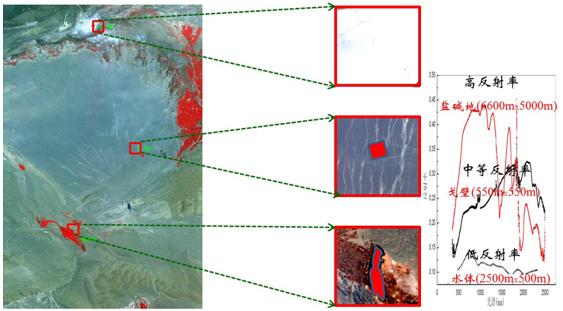Absolute Radiation CalibrationPublishDate:2022-10-31
CRESDA, together with many organizations, carries out on-orbit domestic land observation satellite absolute radiation calibration test in China remote sensing satellite radiation rectification site – Dunhuang Site each year.
The absolute radiation calibration test will complete synchronous observation for many on-orbit satellites with different loads in three sites with high, medium and low reflectance to acquire on-site reflectance spectrum data measured on the surface, solar radiation data and atmospheric sounding data when satellites pass through the site.
The absolute radiometric calibration test has been explored in the following aspects. The black targets with an area of 26,000 sq2 are set in calibration site to replace water as low reflectance measurement goal, which can meet the need of calibration of all on-orbit land observation satellites. The wireless radio-controlled cars are firstly used for site measurement, which greatly increases the efficiency of measurement and reduce workload. As for measurement of site reflection characteristics, the portable and easily controlled BRDF measuring instruments are adopted to carry out multi-dimensional reflectance measurement for target, gobi site and high reflectance field so as to modify measuring error arising from variation of observing angles in the course of satellite swaying imaging and improve the retrieval precision of absolute radiation calibration coefficient. Considering the design feature of our land observation satellite, the satellite nighttime deep sea imaging is applied to realize monitoring for sensor’s dark current (i.e., intercept of calibration coefficient).
CRESDA carries out monitoring and analysis for radiation characteristics of on-orbit land observation satellite based on test results to release satellite absolute radiation coefficient and promote quantitive application of our land observation satellite data.

Appendix:


